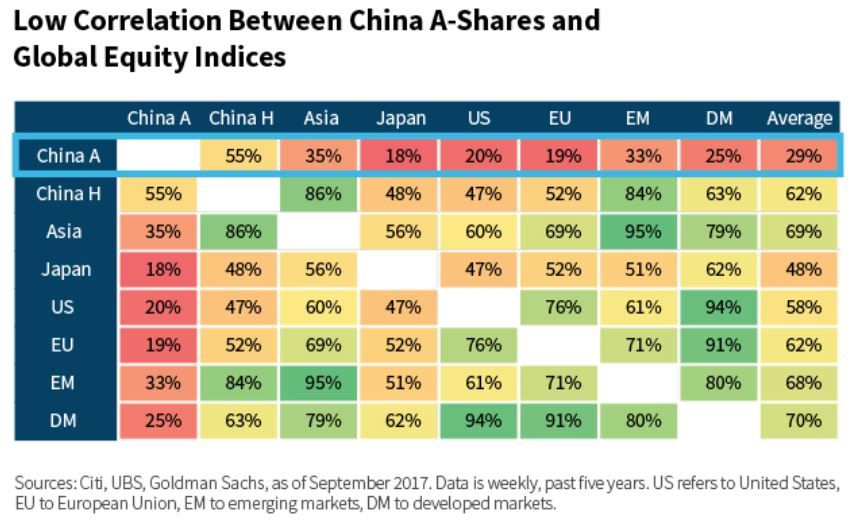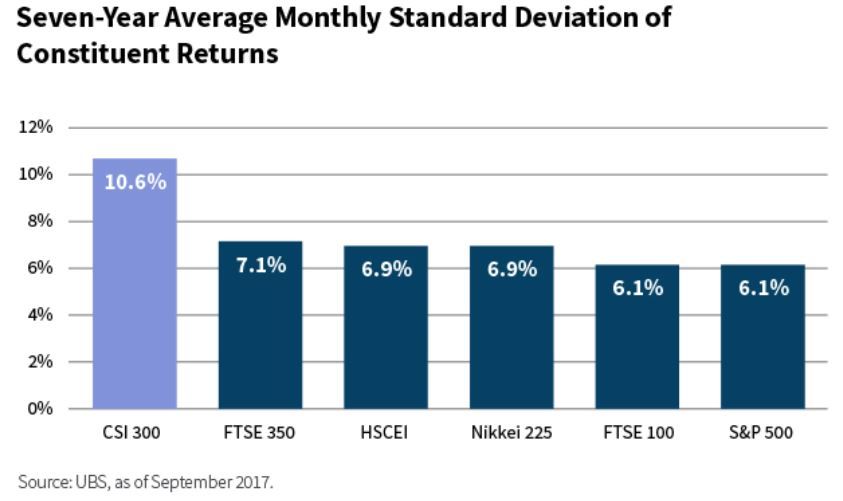
Previously, I explained that China A-Shares provide access to dynamic growth opportunities. Here, I'd like to explain why the China A-Share market structure and characteristics present unique opportunities for active managers.
Specifically, the ownership structure of China A-Shares, characterized by limited foreign investment and a high share of retail investors, supports growth as the share of foreign investment is poised to increase and domestic flows are supportive.
And because the China A-Share market is uncorrelated, under-researched, and inefficient, investment opportunities should abound for active managers committed to fundamental research.
Room for Growth
Historically, China A-Shares were accessible only to domestic investors or foreign institutional investors through the Qualified Foreign Institutional Investor (QFII) system. But with the launch of the Shanghai-Hong Kong Stock Connect in November 2014 and the Shenzhen-Hong Kong Stock Connect in December 2016, that changed.
Despite a decade of the China A-Share market slowly opening, however, foreign investors still account for less than 5% of the market. Thus, there is plenty of room for growth in foreign ownership of China A-Shares.
There is also room for growth is domestic ownership of China A-Shares. Currently, 85% of Chinese household wealth is held in cash or real estate.
As the chart below illustrates, this is well above international norms, and we expect it to decline as the financial markets in China mature and Chinese savers gain more investment options.
Uncorrelated, Under-Researched, Inefficient Market
Broadly speaking, emerging markets have become increasingly correlated to other global asset classes. But, as the chart below shows, China A-Shares tend to have limited correlation to other emerging and developed markets.
The China A-Share market is also under-researched. There are more than 1,500 listed Chinese companies with coverage from fewer than five sell-side analysts.
This number is further reduced when considering just the global brokerages with English language research. They tend to cover just 300 to 400 China A-Shares at any given time.
Lastly, the China A-Share market is an inefficient market, meaning it is a stock-picker's market. As the chart below illustrates, the dispersion of returns among Chinese stocks (as represented by the CSI 300) is substantially higher than any other broad equity benchmark.
Together, these factors—growing foreign investment and domestic flows combined with an uncorrelated, under-researched, and inefficient market—should create investment opportunities for active managers committed to fundamental research.
In another post, I will provide more detail about why these opportunities are being driven by the well-documented growth in China's middle class combined with its innovation boom.
Casey Preyss, CFA
Partner, Portfolio Manager
William Blair
Tipp: Dieser Beitrag ist auch im "Investment Insights"-Blog von William Blair verfügbar.
William Blair Updates per E-Mail erhalten







